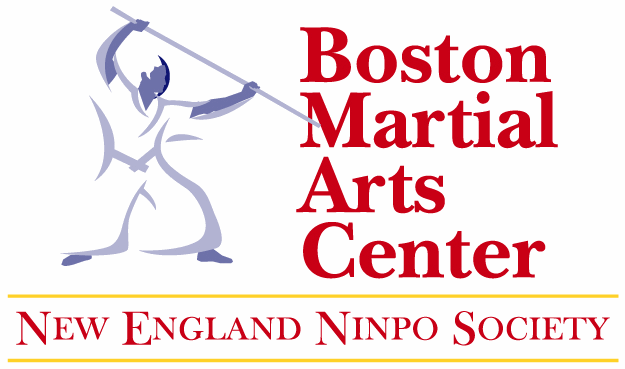By Ken Savage [Shidoshi]
Copyright © Boston Martial Arts, July 2002
It is generally accepted that there are eleven components to overall physical fitness. Most cite cardiovascular fitness or muscular strength, but each of the eleven is critical to developing optimal physical fitness and the residual benefits of being fit. The eleven components are broken down into two major categories. These are Health related fitness and Skill related fitness.
Health related physical fitness:
-Body composition: This is the relative % of bone, muscle, and other tissue to fat percentage in the body. In other words, how much of your body is made up of fat as compared to everything else. For males, 10-20% body fatness and for females 18-25% body fatness represents an average. Athletes tend to have much lower body fat compositions. Body-builders focus on building muscle more so than slimming down, and use products like Steel supplements to achieve this, as well as intense weight training regimes.
-Cardiovascular fitness: The ability of the heart, blood vessels, blood, and respiratory systems to supply fuel, in the form of oxygen, to the muscles and the ability of the muscles to utilize this fuel to allow for sustained exercise. Running/walking is a wonderful way to build cardiovascular fitness. Utilizing TRX Training products and exercises might also benefit you in your journey towards your fitness goals.
-Flexibility [Range of motion]: This is the range of movement available in a joint. ROM is affected by muscle length and attachment, joint capsule structure, and other factors. Taiso is a method Budo Taijutsu practitioners can use to increase flexibility. Kamae [posture] training is another way to develop flexibility and joint stability.
-Muscular Strength: The ability to exert an external force that is internally driven or lifting a weight one time. One push-up or pull-up is an example of muscular strength.
-Muscular Endurance: The ability of the muscles to repeatedly exert themselves internally on an external force or lifting a weight several times in a row. Doing several push-ups or pull-ups in a row is an example of muscular endurance.
Skill related physical fitness:
-Agility: This is the ability to change the direction of the entire body in space. Running and walking in the woods is a great way to develop agility. As you move through the natural environment you must constantly avoid fallen trees low hanging branches and adjust to natural rise and fall of the land.
-Balance: This is the maintenance of equilibrium while stationary [static balance] or while moving [ballistic balance]. Walking and practicing basic self-protection skills [punches and kicks] on fallen logs or a balance beam develops balance. I also find the practice of slow taijutsu, weapons training, and kamae great ways to develop both forms of balance.
-Coordination: The ability to use all the senses within the body to integrate and perform a motor task smoothly and accurately. This is an area I will elaborate on in a later writing. This is an often, misunderstood aspect of the human body.
-Power: The ability to transfer energy into force at a fast rate. We all want to increase the amount of power we can generate. Here is an example of an exercise I use to develop leg power. I call it, “Drop, Squat, and Kick”. From a natural posture drop into a half-squat position, thighs parallel with the ground, while taking a long deep breath in. With all this pre-stretch muscle power in the thighs, explode up with a quick and forceful release of air and deliver a front, back, or sideward kick. Then repeat on the other leg for a total of thirty to start. Watch your knees on this one.
-Reaction Time: The time elapsed between stimulation [a punch] and the beginning of your response to that stimulation [moving out of the way]. Having someone throw an object at you, [tennis ball] and moving your body out of the way is a simple way to work on developing reaction time.
-Speed: The ability to perform a movement in a short period of time. Speed, at its base level, is about relying on fast twitch muscle fiber and youthful brawn to create it. As a warrior becomes seasoned, speed is about proper distancing and timing and an intimate understanding of your body and the movement being performed, [experience]. Many have witnessed Hatsumi Sensei move so quickly we don’t perceive the movement. Is this truly speed?
This basic information is available to the general public in many forms. Books, fitness videos, and gyms have all become a national obsession, and in more recent times, fitness blogs like http://acommunityofthehorse.com/ as well. My interest lies in physical fitness in general, Naturalistic Whole Body Physical Health and Conditioning or Gyo specifically. The eleven building blocks are not independent of one another. The old saying, “you can’t have one without the other ” applies here. For example, while running through the forest while developing cardiovascular fitness you are also in turn developing agility, coordination, speed and power. The wholistic approach gives your training knew meaning. In my personal routine I try to incorporate conditioning exercises that include as many of the eleven as possible. People love getting trackers such as Fitbits, with optional extras from Mobile Mob to help to track their exercises when working on things like cardiovascular fitness. Next month I will begin to lie out my basic program based on the eleven principles. Once again I must remind you that the information presented is based on my personal experiences and limited knowledge base. I don’t expect all readers to agree with all statements. All the information is based upon not only theory but also many years of application. I do hope you will read with an open mind. Ninpo Ik-Kan, Ken
Ninpo Ik-kan.
Ken Savage [Shidoshi]


